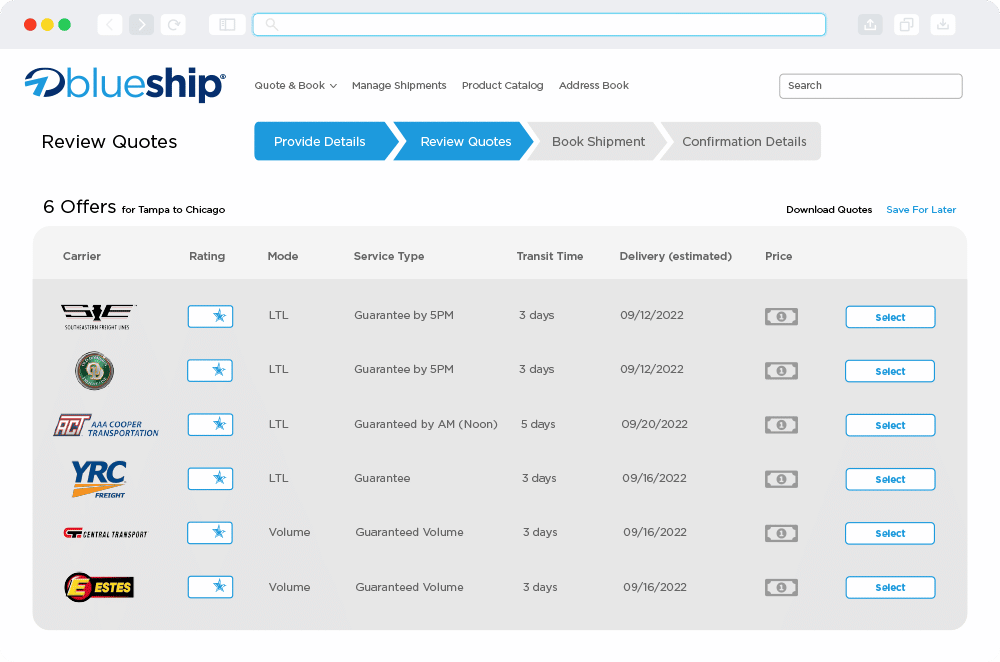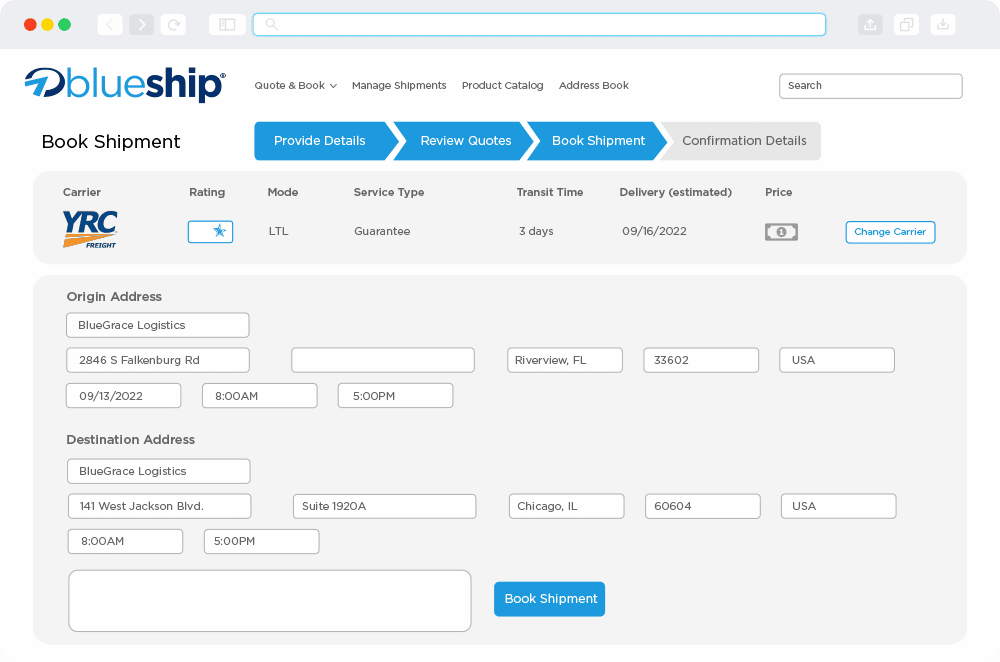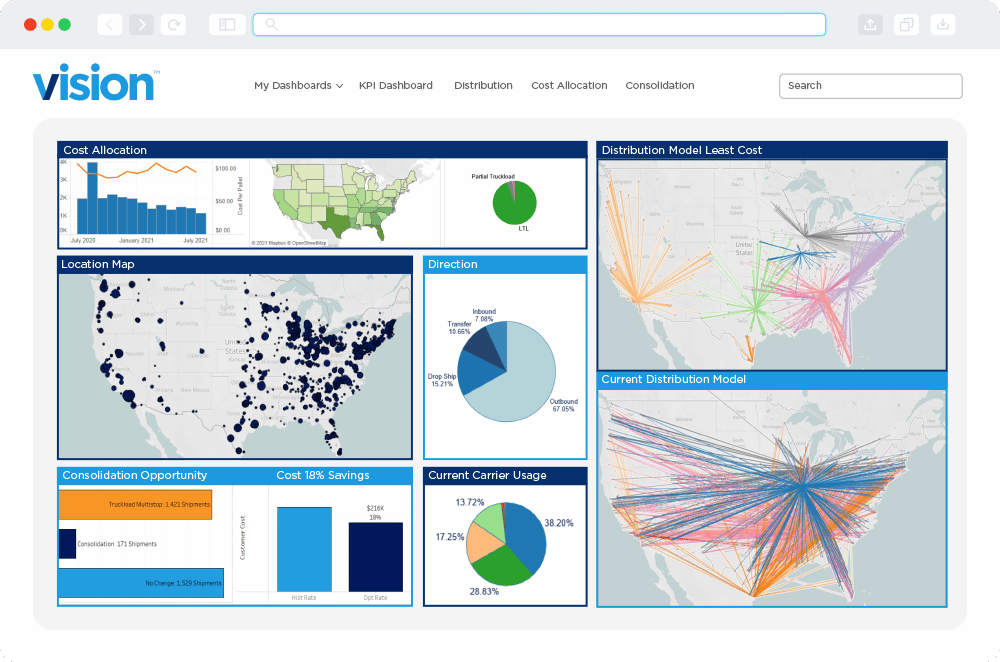
Shipping Heavy Haul and Oversize Loads: What is it and How Does it Work?

Optimizing your heavy haul logistics is key for any business that regularly transports oversized equipment. There are many ways optimization can benefit your operation, including:
- Minimizing your downtime and disruptions
- Improving your project timelines and turnaround
- Reaching higher levels of client satisfaction
- Streamlining routes (such as with GPS) and load configurations
- Reducing heavy haul trailer fuel consumption and emissions
- Maintaining all necessary regulatory compliance
- Managing safety concerns
- Safeguarding your company’s valuable cargo
Proper optimization allows your company to manage resources effectively and streamline your operations, thus setting the stage for long-term growth and profitability.
In this guide, we’ll define heavy haul trucking, what regulations in the industry are like, how you can plan your routes more effectively, and much more!
Get Started with a Heavy Haul Freight Quote
What Exactly is Heavy Haul Trucking?
Heavy haul trucking refers to the transportation of exceptionally large or heavy loads that exceed the standard legal limits for weight, width, height, and length on the road. This specialized transportation practice is known by various names, like:
- Oversized
- Over dimensional
- Wide loads
- Over the road (OTR)
- Overweight freight
- Heavy equipment shipping
Heavy haul is a crucial part of the logistics industry and is constantly utilized across a broad range of diverse industries, such as:
- Construction
- Manufacturers
- Mining
- Aerospace
- Renewable energy
- Shipbuilding
- Agriculture
Overall, this service enables the safe transportation of bulky or heavy items that would otherwise pose logistical challenges to their desired destinations.
What are the Weight and Size Regulations for Heavy Haul Loads?
The regulatory world of heavy haul loads ensures road safety and prevents damage to infrastructure. Regulations tend to vary by jurisdiction but either federal or state laws govern them. Most regulations relate to the dimensions of the load, including width, height, length and weight.
Oversized loads are any load that exceeds standard limits for length and weight, which vary by state. The typical weight limit for loads in most states is usually 80,000 pounds, but many heavy haul loads can reach up to 200,000 pounds or more!
So, what kind of oversize loads are companies typically moving? Some of the most common types of oversized freight include:
- Industrial machinery
- Excavators
- Cranes
- Prefabricated structures
- Wind turbine components
- Large tanks
Once you know what you’ll be hauling and what the dimensions are, you can determine what permit you’ll need and how to obtain it.
How Can I Obtain Permits and Ensure Compliance?
Obtaining permits and ensuring regulatory compliance involves multiple steps, which can vary depending on the job and location. However, here are some general steps to follow:
1. Assess Your Load Details and Dimensions
Always start with determining the specifications and route for your oversized load. Different states have varying rules and requirements, so research locations that are applicable to you beforehand to ensure you understand what is required.
2. Identify Your Jurisdictions
To ensure you’ve got all necessary permits in order, you’ll need to know every state or area your load will pass through. Regulations can differ significantly from one jurisdiction to another, so you must not skip this step!
3. Apply for Your Required Permits
Now that you’ve identified all states your load will travel through, you can apply for the necessary permits from the relevant authorities or jurisdictions. This can often be done online through state transportation departments or permitting agencies. Most information is available online, so be sure to search the web if you have questions!
4. Provide the Load Information
To correctly fill out your permit and apply for it, you’ll need to provide detailed information about the load, such as its dimensions, weight, routes, and travel dates. Make sure all information you put down is accurate and easy to understand.
5. Pay the Permit Fees and Wait for Approval
Heavy hauling permits usually come with fees based on factors like weight and distance traveled, so you’ll need to pay these. Be sure to also allow enough time for the permitting agency to review your application. Approvals can take anywhere from a few hours to a few days, depending on their complexity.
6. Follow Any Required Conditions
Heavy haul permits often come with conditions, such as travel restrictions during certain hours or days and speed limits. Also, you may be required to have a pilot car.
Federal regulations, governed by the Federal Motor Carrier Safety Administration (FMCSA), set the baseline for heavy haul operations in the United States. State regulations build on these federal standards, often tailoring them to their specific road conditions and infrastructure. Understanding these regulations is necessary for a successful heavy haul operation.
How Can Effective Routes be Crafted for Heavy Haul Shipments?
Crafting a strategic route is a vital component of heavy hauling. There are a variety of tools and strategies that can be utilized to create a more effective route, including:
Using Route Planning Software and a GPS
Using a GPS and route planning software can do a lot to help your load reach its location more smoothly! These technologies integrate real-time traffic data, road condition updates, and bridge clearance information, allowing you to more efficiently travel and avoid potential delays.
Taking Advantage of Permit Management Tools
Permit management tools can help simplify the complex world of heavy haul compliance. They’ll help ensure your load is within weight and size restrictions and that you’re following all necessary legal requirements.
Coordinating with Others
There may be times when you’ll need to coordinate with local authorities regarding your load. This can be for a variety of reasons, like needing to navigate a restricted route. In these circumstances, preplanning with route analysis tools and speaking with local authorities early is important.
How Can the Right Equipment be Chosen for Heavy Haul Loads?
Selecting the right heavy haul trailer and equipment is essential for heavy hauling. Some tips for choosing one include:
- Select the right weight capacity and axle configurations
- Use proper load securement techniques, such as chains and binders
- Always include adequate padding and cushioning to protect your load
- Conduct regular inspections and adjustments during transit
What Kind of Training is Essential for Heavy Haul Drivers?
When it comes to heavy equipment transportation, proper training is prioritized above all else. Heavy hauler drivers have a keen skillset and specialized knowledge regarding:
- Advanced vehicle operation
- Load balancing
- Intricate maneuvering techniques
- Effective communication and coordination with others
Training programs are robust and rigid, covering everything drivers need to know in order to safely operate vehicles. Programs cover topics like:
- Equipment-specific knowledge
- Axle weight distribution
- Securing methods to ensure safe transport
- Assessing low clearances and tight turns
- How to navigate challenging routes
Safety protocols extend beyond training and encompass:
- Brakes and tire checks
- Load securing procedures
- Utilizing chains, straps, and specialized rigging
- Emergency protocols encompass that address issues like accidents and adverse weather conditions
- Healthy communication and team support
By embracing a safety-first approach that integrates robust training and driver education, companies can ensure a safe journey for both their cargo and everyone else on the road. This commitment to safety not only safeguards valuable cargo but also contributes to the efficiency and reliability of heavy haul transportation.
How Does Technology Play a Role in Oversized Shipping?
Embracing the digital age, new technology is reshaping heavy haul, offering innovative solutions to optimize routes and improve safety. From route planning to real-time location tracking, there are a wealth of tools that are transforming the way oversized shipping is accomplished. Let’s explore some of these game-changing technologies for heavy hauling:
GPS Navigation
GPS is especially wonderful, because it can calculate routes tailored to the specific dimensions and weight of your load. This means it can automatically identify roads and bridges that can accommodate your load without encountering clearance issues or weight restrictions, saving you time and minimizing the risk of accidents or damage caused by unsuitable routes.
Location Tracking
Real-time tracking is also vital! With real-time location data, dispatchers and clients alike can monitor the progress of important shipments anytime. This feature can be particularly useful when dealing with time-sensitive deliveries or navigating through unfamiliar terrain.
Load Monitoring Sensors
Load monitoring sensors can further enhance safety while heavy hauling. These sensors are strategically placed on heavy equipment to measure factors like weight distribution, load shifts, and stress. Thanks to the data they provide, better steps can be taken to efficiently load and prevent potential load imbalances. Load monitoring sensors also help ensure compliance with weight limits, preventing potential legal and safety issues.
Beyond safety and compliance, sensors can also help by providing real-time feedback to drivers. When a shift in the load’s center of gravity or excessive stress is detected, drivers and dispatches are alerted, so they can quickly take steps to correct things.
How Can the Right Carrier and Logistics Partner be Chosen for Heavy Haul?
If you’re searching for the right carrier and logistics partner, it can be difficult to know exactly what to look for. However, securing the right heavy hauler is a must, as delays can significantly impact your operational efficiency and project outcomes.
So, how do you identify the ideal partner for your business? To navigate this process, consider several criteria and questions including:
1. Their Experience Level
Look for a partner with a proven track record and who specialize in heavy haul transportation. Their expertise in handling unique challenges is invaluable.
2. Their Equipment Capabilities
Ensure your carrier has a fleet of specialized trucks and equipment designed for heavy haul operations. This guarantees that they can handle your load safely and efficiently.
3. They Understand Regulations
Compliance with regulations and permits is non-negotiable, so don’t neglect this part. Your partner should have a thorough understanding of all local and federal regulations, along with experience in obtaining the necessary permits.
4. They’re Insured
Insurance coverage is another non-negotiable consideration. Verify that your hauler has comprehensive insurance that covers both the load and any potential damages to third parties. This helps protect you against any unforeseen issues during transit.
5. They Value Good Communication
Effective collaboration between everyone involved is a key element of the successful transport of your heavy haul load. Transparent communication ensures everyone is on the same page regarding timelines, route planning, load specifications, and any potential challenges. Besides this, transparent communications also help foster trust and allow for proactive adjustments if issues arise.
6. They Collaborate
Collaboration enhances problem-solving. When challenges emerge, a well-coordinated team can quickly brainstorm solutions and implement them, reducing downtime and minimizing disruptions. A team that collaborates is also adaptable. Heavy haul operations often encounter unexpected road closures, weather conditions, or logistical changes. A partner who is flexible and communicative can swiftly adjust plans and reroute shipments to avoid delays.
When it comes down to it, finding the right partner for your heavy haul operations is just as important as the cargo you are transporting. To find one that is a good fit for your operations, always ensure that they are communicative and have the experience necessary to get the job done right.
Final Thoughts
In conclusion, heavy haul trucking is a specialized and vital component of the logistics industry. Whether you’re a seasoned logistics professional or a business looking to transport oversized loads, understanding the intricacies of heavy haul is essential for success. It requires a trusted partner, a commitment to safety, cutting-edge technology, legal compliance, specialized equipment, and open communication.
As you navigate the world of heavy haul, remember that these high standards are not just a requirement but a guarantee of safety, efficiency, and reliability in this critical part of our supply chain. Embrace the complexities, and with the right knowledge and partners, your heavy haul shipments can move smoothly and securely, ensuring your cargo reaches its destination without a hitch.
Looking for a heavy haul partner that meets the above criteria? We’d love to help! Contact us today for a free freight quote!
Recent Posts
Predictive and Prescriptive Analytics in Logistics
Predictive and Prescriptive Analytics in Logistics
View Whitepaper
Hurricane Preparedness Guide
Hurricane Preparedness Guide
View Whitepaper
The Power of a 3PL Partner: When and Why to Collaborate
The Power of a 3PL Partner: When and Why to Collaborate
Read The Logistics Blog®






